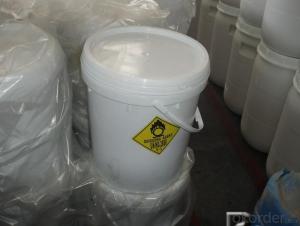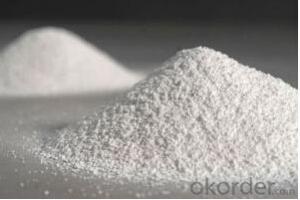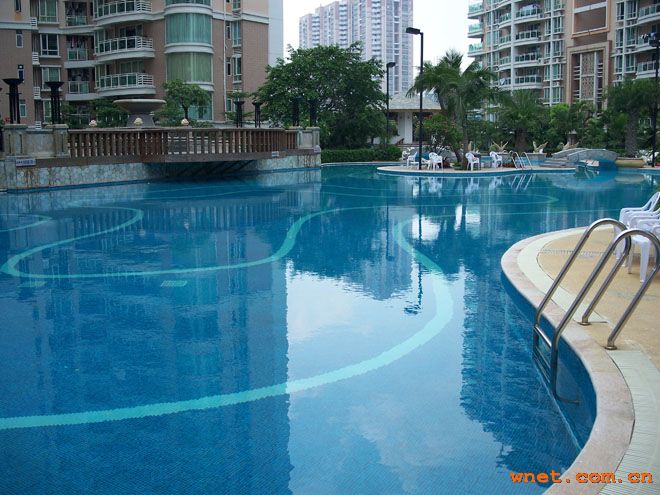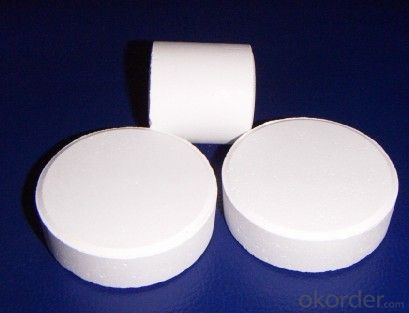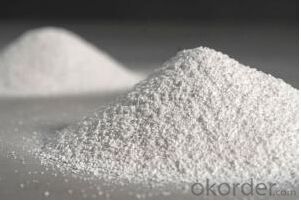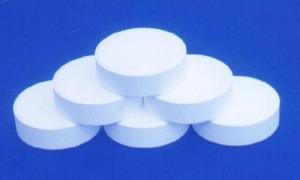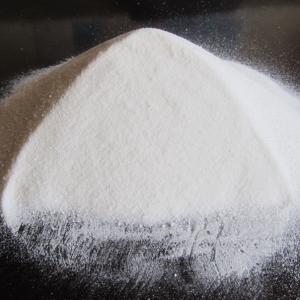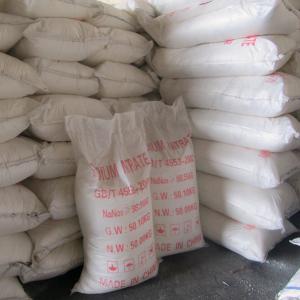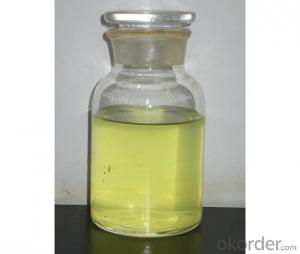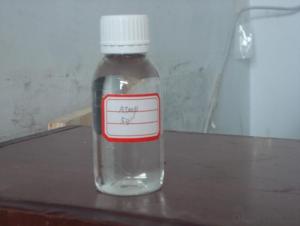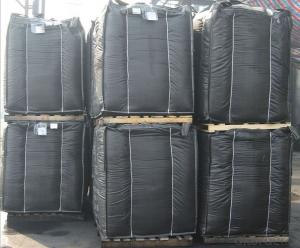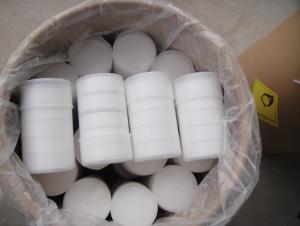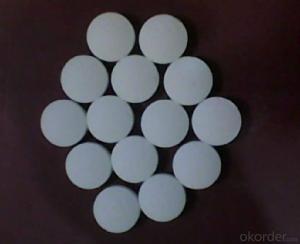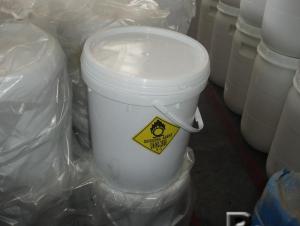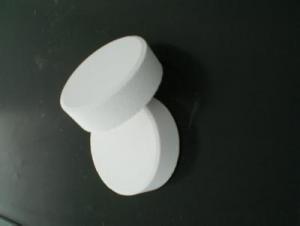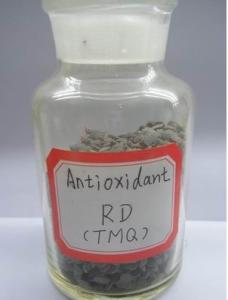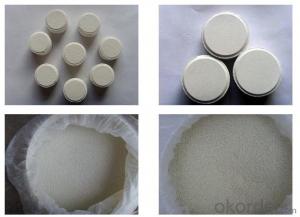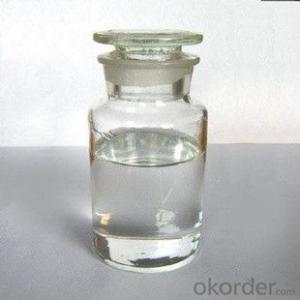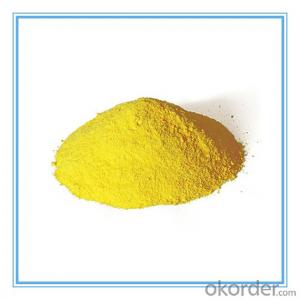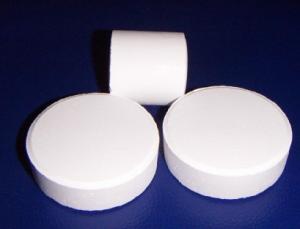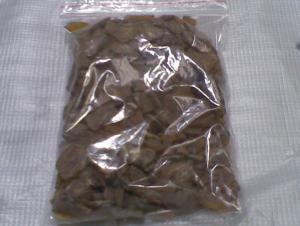TCCA Chlorine Tablet for Swimming Pool Field
- Loading Port:
- Tianjin
- Payment Terms:
- TT OR LC
- Min Order Qty:
- 22 m.t
- Supply Capability:
- 1800 m.t/month
OKorder Service Pledge
OKorder Financial Service
You Might Also Like
TCCA 90% Powder, Granular, Tablets
Introduction:
CNBM –TCCA White tablet with irritant chlorine odor. Slight solute in water. TCCA is the organic compound with the formula (C3Cl3N3O3). It is used as an industrial disinfectant, bleaching agent and a reagent in organic synthesis. This white crystalline powder, which has a strong "chlorine odour," is sometimes sold in tablet or granule form for domestic and industrial.
Specification:
Chemical Name | Trichloroisocyanuric Acid |
Molecular Formula | CONCL3 |
CAS Number | 87-90-1 |
Avaliable Chlorine %min | 90.00 |
Moisture content %,wt,Max | 0.30 |
PH Value (1% solution) | 2.7~3.3 |
Solubility 25℃ Water | 1.2g/100g |
Solubility 30℃ Acetone | 36g/100g |
Specific Gravity | 0.95(light)/1.20 |
Granular Particles Size
Mesh | 5~8 | 8~30 | 20~40 | 20~60 |
Tablets Forms
Weight | 200 gram | 150gram | 100gram | 50gram | 30gram | 20gram | 15gram | 10gram |
Diameter(mm) | 76 | 70 | 50 | 42 | 30 | 30 | 30 | 30 |
Height(mm) | 25 | 21 | 26 | 27 | 22 | 16 | 12 | 8 |
Multi-Functions
We made multifunctional tablets according to customers’ needs. For Instance, we press TCCA 90% granular with chemicals such as Boric Acid,. Sulfate Copper, Sulfate Aluminum And PAC.
Packing:
Granular& Powder:
50KG PLASTIC DRUMS/ FIBER DRUMS.
25KG PLASTIC DRUMS/FIBER DRUMS.
1000KG BIG BAGS.
Or any other packages suggest by customers.
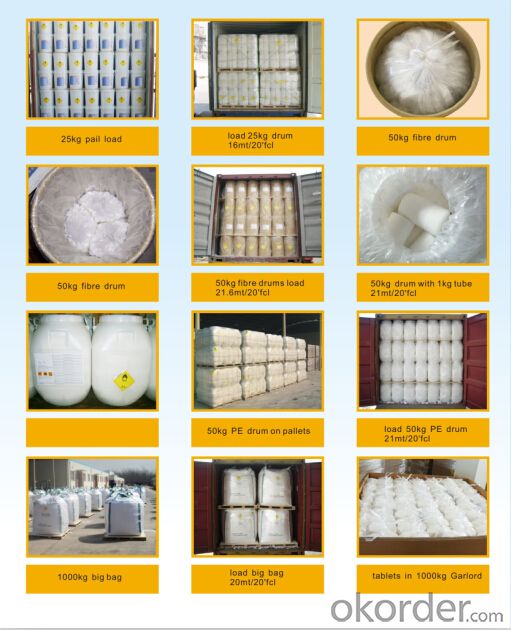

Tablets:
Inner Packing:
Individually Wrapped for 200gram,150gram, 100gram
1kg Plastic tube for 200gram
1kg plastic bottle & 5kg plastic bottle for smaller tablets
FOQ:
1, Manufacturer or Trade?
We are Manufacturer.
2, What's the delivery time?
workingdays after we received your pay or LC original.
3,Could We visit your factory?
Yes. welcome.
- Q: Chemistry is often said that the catalyst can change the material reaction rate, rate and speed What is the difference
- Rate refers to: the amount of time in the unit reaction, and speed, and the speed simply refers to the speed
- Q: how could scientists know the exact catalyst for every reactions??? THANX sooo much
- Believe me, nema, there's no way that we chemists know the best catalyst for every reaction. That would be simply impossible. However, from the type of reaction, the reactants, products, reaction conditions, solvents, etc. and from one's experience and the literature (papers and patents) one can get a good idea for most reactions of the type of catalyst that has worked for similar systems. One then starts off with a catalyst from the literature and modifies or changes it if improvement is needed based on chemical principles that one learns. There are also some theoretical calculations that can be made. Sometimes they work and sometimes they don't :) If it is an industrially important process like the Haber process for making ammonia from nitrogen gas and hydrogen gas, there may be thousands of catalysts which have been tried and evaluated. New minor improvements are being made every day. When a company does find a very good catalyst for an important reaction, often they keep it a trade secret. The good catalyst can make a huge difference in how commercially successful a particular process is. That's a large part of what chemical engineers do. You may never know if you have the best catalyst. The most you can hope for is one that is good enough. So it's a few parts personal knowledge, a few parts literature, a couple of parts theory, a lot of experimentation and often, more than not, a little luck. :)
- Q: What is a Catalyst?
- Catalysts are something that will speed up a reaction. Catalysts are usually acids but platinum catalysts are used in the industrial production of nitric acid (4 NH3 + 5 O2 ---4 NO + 6 H2O). Vanadium pentoxide is used as the catalyst in the industrial manufacture of sulfuric acid (S + O2 ---SO2. 2 SO2 + O2 ---2 SO3) The catalyst is used to make the reaction between sulfur dioxide and oxygen A LOT faster. Catalysts are also used in explosives. The most common is sulfuric acid (eg. nitroglycerin, TNT, nitrocellulose). Weaker acids like citric acid is used in the synthesis of HMTD, an organic peroxide. Hydrochloric acid is also a commonly used catalyst. Manganese dioxide can be used as a catalyst to generate oxygen when added to potassium chlorate or hydrogen peroxide. (2 H2O2 + MnO2 ---2 H2O + O2 + MnO2 (it is not necessary to include the catalyst in an equation, however). (2 KClO3 + MnO2 ---3 O2 + 2 KCl + MnO2).
- Q: What is the catalytic efficiency of ordinary chemical catalysts?
- Different reactions, with the same catalyst, the catalytic efficiency is different. The same reaction, with different catalysts, the catalytic efficiency is also different
- Q: What is the reaction of hydrogen peroxide to add manganese dioxide?
- This problem is not easy to answer, the principle of manganese dioxide catalytic hydrogen peroxide I have not learned, but I have also considered, I think so, hydrogen peroxide and manganese dioxide first combination, the formation of permanganic acid, permanganic acid is a Very special acid is indeed present, it can not be stable under normal conditions, it will be further decomposition, the formation of manganese dioxide, oxygen and water
- Q: The last question asked no one answered this question.
- First of all now the most common way to change the ligand.
- Q: Why extract the genome, the digestion is always not cut
- The process of metabolism in the body contains many complex and regular material metabolism and energy changes.Green plants and certain bacteria use solar energy, water, CO2 and inorganic salts and other simple substances, after a series of changes, the synthesis of complex sugar, Fat, protein and other macromolecules, and animals and the use of these plants in the material, and through the complex decomposition and synthesis, the reaction into their own part of the need to grow, breeding, etc. In the laboratory, complex The synthesis and decomposition of organic matter must be carried out under severe conditions such as high temperature, high pressure, strong acid and alkali, such as starch and protein hydrolysis, and some reactions are difficult to carry out in vitro, such as protein synthesis, but in biological conditions Mild (370C or so, near neutral pH), these reactions can be carried out smoothly and quickly.For example, animals eat meat in the digestive tract only a few hours will be completely digested and decomposed; bacteria in the appropriate conditions, Twenty minutes to proliferate generation, in this short twenty minutes, the synthesis of new cells within the need for all the complex substances, etc., what is the reason? This makes the chemical reaction in the body easier And the root cause of rapid progress is the prevalence of a catalytic role in the body of the protein - enzyme.
- Q: Describe the role of a catalyst and a substrate in a chemical reaction.
- a catalyst lowers the activation energy of a reaction. By lowering the activation energy, the internal kinetic energy the reactants become sufficient for the reaction to occur on a much larger scale and thus appear faster. Without the catalyst, you would depend on the statistical probabilities of small numbers of reactant particles having enough internal kinetic energy to overcome the activation barrier. a substrate is merely the substance in the reaction being catalyzed
- Q: role of catalyst?
- A catalyst speeds up a reaction, without itself being consumed in the reaction. Catalysts participate in reactions but are neither reactants nor products of the reaction they catalyze. They decreases the activation energy of a chemical reaction and work by providing an alternative pathway for the reaction to occur, thus reducing the activation energy and increasing the reaction rate.
- Q: What are the characteristics of the catalyst in the catalytic reaction?
- The role of the catalyst in the chemical reaction is to change the rate of chemical reaction, and its own quality and chemical properties do not change.
Send your message to us
TCCA Chlorine Tablet for Swimming Pool Field
- Loading Port:
- Tianjin
- Payment Terms:
- TT OR LC
- Min Order Qty:
- 22 m.t
- Supply Capability:
- 1800 m.t/month
OKorder Service Pledge
OKorder Financial Service
Similar products
Hot products
Hot Searches
Related keywords


